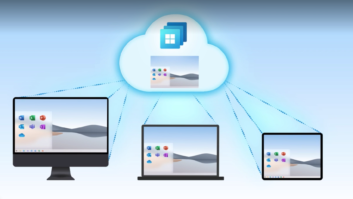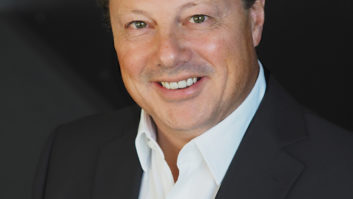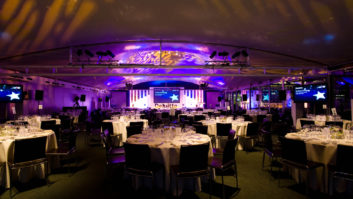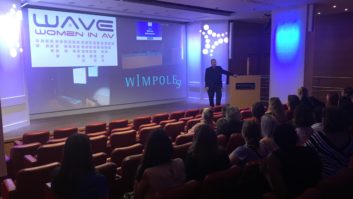The post pandemic era of AV technology is a hot topic with businesses continuing to explore how they manoeuvre their way through a hybrid world. Innovative uses of AV tech are needed to pave the way for this newly adapted way of working.
One of the biggest challenges at the moment is the fundamental change of employee work habits due to Covid-19, and how this will continue to impact working practices in the long term. Throughout the pandemic, many people started working from home, and many organisations, who were perhaps reluctant to look at that approach, found they had to reassess their real estate.
One thing we’ve seen is the proliferation of huddle spaces as the office space and its design need more consideration in order to facilitate collaborative face-to-face working. With working from home, we’re able to crack on with detailed tasks privately, while with the return to the office, we work in a social setting with others. Offices are needing to become more adaptive to allow this collaborative way of working rather than just having rows of desks. Thus there are more considerations now around office configuration and the deployment of AV.

Alongside this, we’re seeing the dynamic between employer and office workers evolve. The employees view on what an office is to them has shifted due to adopting hybrid working practices from both the office and home. Adaption by employers is a
key element for retaining and attracting talent through offering flexible working practices while also providing a high-quality set-up that facilitates collaborative working and productivity.
If you look at the way display markets and the AV industry has changed in the last five years, there’s been some incredible advancements. There are a number of emerging display technologies that can be adopted within a corporate space, which seek to facilitate these improvements. We’re seeing big changes around LED in terms of a display solution. Pixel pitches are decreasing, meaning the resolution is improving and size reducing, replacing traditional projection technologies which rely on darker ambient conditions therefore providing greater flexibility to create digital canvasses in corporate environments. Alongside this, Samsung Smart View Plus technology enables you to share your portable or mobile device or your laptop onto a display in a meeting room without the need for cables.
With the corporate space in particular, we think the biggest change is around these LED display solutions. Other areas include improvements around desktop monitors and personal workspaces, and the proliferation of larger screens that are integrated with other displays and technologies.
In terms of permanent shifts, it’s important to remember the AV industry is ever-evolving and ever-changing. Following the pandemic and rising cost of energy prices, companies are also taking cost of ownership a lot more seriously. This focusses on how long a product will last and how much it costs to power it instead of just the upfront price. While displays in the corporate setting are getting bigger and replacing older technologies, Samsung is one of the leaders with microLED technology, which is more user-friendly and robust in terms of the way it’s built and creates an incredible image.

As we move into the future, corporate spaces will continue to face challenges, such as how to better embed video conferencing programmes into our interactive products, especially with a secure one-click-to-launch that allows IT departments to track everything. We recently read that it takes about 10 minutes to start a virtual meeting, this includes getting the right AV, camera, and other equipment set-up, which can feel like a terrible waste of time and something that many businesses go through. To help encourage proactivity on meetings, we’re working with the global standards teams at multiple organisations and are looking to offer more control to individuals using meeting platforms to reduce this time. These are things we are working to resolve at Samsung, and it will no doubt be an interesting development for many companies on a global scale over the next few years.
While the corporate space is a key for AV innovation, consumer driven spaces are also adapting to post-pandemic demands. Exciting innovations include large LED display studios used to create interactive digital backgrounds for films, as seen in major productions like Disney’s The Mandalorian, or the clever design of the SoFi stadium in the US where LED is used to provide scoring information and advertisements, all while utilising the LED as a fundamental part of the building structure. Though most companies will not be able to indulge in such costly levels of AV technology, taking the principles of innovative design, high quality 8K definition and interactive capabilities can provide inspiration for displays that will attract consumers moving forward.
It is clear that integration, innovation and thoughtful uses of AV technology are key to capturing both consumers and employees in the new age of hybrid working and living. By adopting new technology and predominantly pushing LED capabilities in both a creative and practical sense, both corporate and consumer businesses can thrive in the AV landscape.







